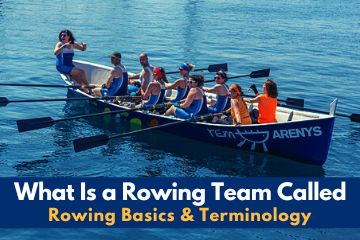
Hello friends! It’s Petra again, and today, I thought I would help those who have a lot of questions regarding the terminology used in rowing. Words like bow pair, bow coxed boat, and many others can be quite confusing.
For instance, a rowing team is called a “crew” in most parts of the world. However, in the USA, the people in the boat are called a team or a rowing team. Americans use the word crew or crewing to refer to the sport of rowing.
I understand. This sounds like a lot if you’re new to rowing, but don’t worry. With today’s article, I’m going to help get you up to speed with the terminology used in the rowing world.
Let’s be honest, not everyone grows up in a family that is into rowing. I’ve known many people who didn’t even consider rowing until they were in their 50s or 60s and had retired from their jobs!
Even if you have no plans to jump in a rowboat yourself, you may like watching regattas, so I’m sure you’ll find today’s piece interesting and helpful.
Grab a cup of your favorite beverage, and let’s get down to brass tacks!
- Related Topic: How Many in People in a Rowing Team?
What Do They Call the Rowers in the Boat?
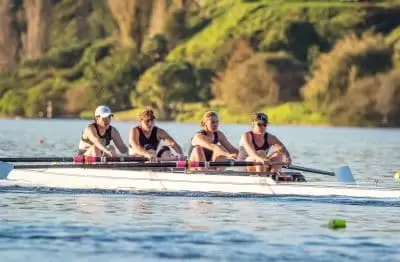
Before we start, I want to explain that other countries, even English-speaking countries like Australia, use some rowing terms that are different from those used in the USA.
For the most part, I’m going to focus on the terminology used in the USA. If I talk about terms that other countries use, I’ll be sure to tell you what country it is that I’m talking about.
First, let’s clear the air by talking about the two types of rowing.
What Are the Main Types of Rowing?
If you are holding two oars, then what you are doing is called sculling. It doesn’t matter if you are alone or with others in the boat, you are sculling.
If you are holding one oar blade, and another rower is holding another oar on the opposite side of the boat, you are doing sweep rowing, sometimes called sweeping. Sweeping involves at least two people in the boat.
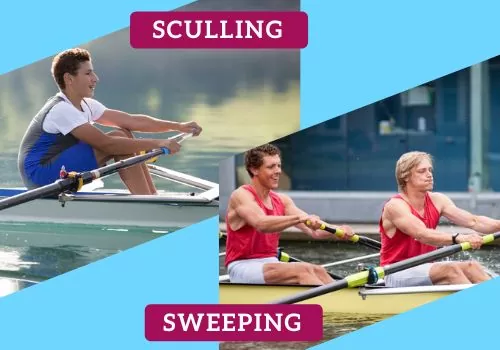
While nearly everyone else in the English-speaking world calls the people in a rowboat a crew, American schools frequently intermix the terms rowing and crew or crewing (read more on rowing team positions ).
Yes, for Americans, a crew and/or crewing is the same thing as the act of rowing. Therefore, in the US, the people in the boat aren’t a crew, but a team sometimes referred to as a rowing team.
Don’t let this confuse you. If you hear an announcer at a regatta saying, for example, that the next crew is about to begin, they simply mean that the next rowing race is about to start. If the announcer asks for Poseidon’s team to meet at the dock, they are asking for team members from a particular boat to meet somewhere.
The United States Rowing Association uses the term crew for rowing, while in most parts of the world, the term crew refers to the people in the boat.
Don’t worry, once you’ve watched the sport of rowing for a season or two, you’ll become familiar with these terms and you won’t think twice about their meaning.
- Learn More: Is Rowing Hard
What Is the Leader of the Rowing Team Called?
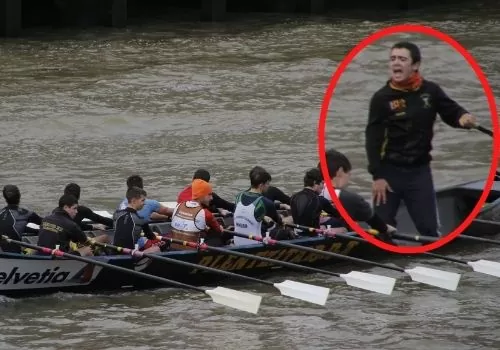
Rowing is a team sport, so it needs a leader. The leader, if you will, is called the coxswain.
Some people refer to the coxswain as the coach, but they are much more than just a coach. Some of their duties include:
- Keeping the team safe by avoiding obstacles and making sure that the rules of the race are followed
- Steers the boat
- Stay in command at all times
- Coach when necessary
- Provide feedback to the team, both in and out of the boat
- Make tactical decisions when required
- Organize and direct the team even outside the race, such as directing who will remove the boat from the water, etc.
- Take full responsibility for the boat and the team, especially if an accident occurs.
At some clubs, the coxswain is also responsible for the training schedule, implementing it, and deciding who will row in a regatta and who will row on which team and in a particular boat.
The coxswain knows everything about each team member. They know who is stronger, who they can count on in the last 100 meters, who works well together, each team member’s friends and advisories, as well as each team member’s strengths and weaknesses.
The coxswain doesn’t row, and you will often find the coxswain is tiny in comparison to other members of the crew team. This makes sense when you consider that the coxswain is just dead weight.
The coxswain also isn’t included in the age category. So everyone on the team can be 30 years of age and the coxswain can be 50 or 15 years old. The same is true with the sex. Even if this is a male-only team, the coxswain can be a female.
This wasn’t always the case but the rules were changed in 2017 that allow any sex to act as coxswain.
Since the coxswain needs to be as light as possible to prevent dead weight from holding back the boat, it is not uncommon to find regattas that have minimum weight rules for the coxswain. If the coxswain doesn’t meet the minimum weight requirement, the boat must have a bag of sand put on board to make up the difference.
For example, if the coxswain weighs only 90 pounds and the minimum weight is 100 pounds, then this team will add a 10-pound bag of sand to the boat to make up the difference.
They may be short, thin, young, or old, but the coxswain is super important to the team and this single person can make the difference whether a team wins or loses the race.
What Do They Call a Team Without a Coxswain?
A rowing boat without a cox is a called a coxless pair or coxless quad or you might hear them refer to a coxless boat as a “straight” boat.
A coxless pair and a coxless quad (meaning 4 rowers) are the only coxless boats you will see at any regatta.
Due to their speed and lack of maneuverability, eight rowers without a cox are very rare and are considered dangerous.
Coxless eights are usually seen only in beginners classes for youngsters of elementary school age.
What Is the Difference Between Head Races and Regattas?

While these are both races, they are a bit different.
Imagine the difference between a 100-yard dash and a marathon. That should help give you an idea.
There is more than one race at a regatta. There are different races due to sex categories, weight categories, age subcategories, races between sweep boats and sculling boats, etc.
A regatta often takes up an entire day, from sunup to sundown. It can be exhausting but SO much fun!
A head race is a single race but it is much longer than the usual regatta race.
A regatta is typically 2,000 meters or just over one mile. Head races are often 3 or 4 miles in length and they involve obstacles, such as rocks, trees, or bridges that one must pass under and not strike any pylons.
In a head race, boats set off one at a time, rather than everyone at the same time as what happens with regattas. During a head race, each boat is timed from the start until they cross that finish line.
Head races were originally planned to help keep rowers in shape as the season comes to a close. Nearly all head races are held in the fall but a few, in warmer places like California, are held in January.
The Head of the Charles is by and far the largest head race, taking up two entire days. There are approximately 11,000 rowers who compete in this event that is held in mid-October. The course is 3-miles long and has occurred every year since 1965.
One of the best-known and oldest head races is the Henley royal regatta held on the Thames River in the UK. This is held over 5 days and has been ongoing since 1839!
What Is the Difference Between a Boat, a Shell, and a Scull?
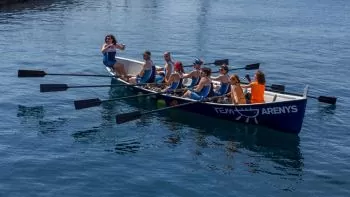
Actually, two of these are the same word as far as the World Rowing Championships are concerned!
It is perfectly fine to call the boat a boat, however, you may hear the term shell also used. This is because most boats are little more than a shell when compared to larger boats that are used for pleasure or for fishing.
Some boats measure as little as 20 inches wide! This makes balance a thing of great concern! You can barely fit your behind and your feet in the boat.
Why are these boats so narrow? It’s all about weight.
Do not, however, call the boat itself a scull. The person in the boat is a scull, whether he’s a single sculler or he’s part of the sculling team, the type of rowing they are doing is called sculling or they are part of a double scull, but the boat is NOT a scull.
If you want to sound like an old hand, get used to calling the boat a shell.
Commonly Used Terminology
Like most sports, there is a whole world of terminology that rowers use to talk about their rowing races, the racing boat, and the sport itself.
Acquaint yourself with some of these terms so you’ll have a better understanding of what is going on when you attend a regatta:
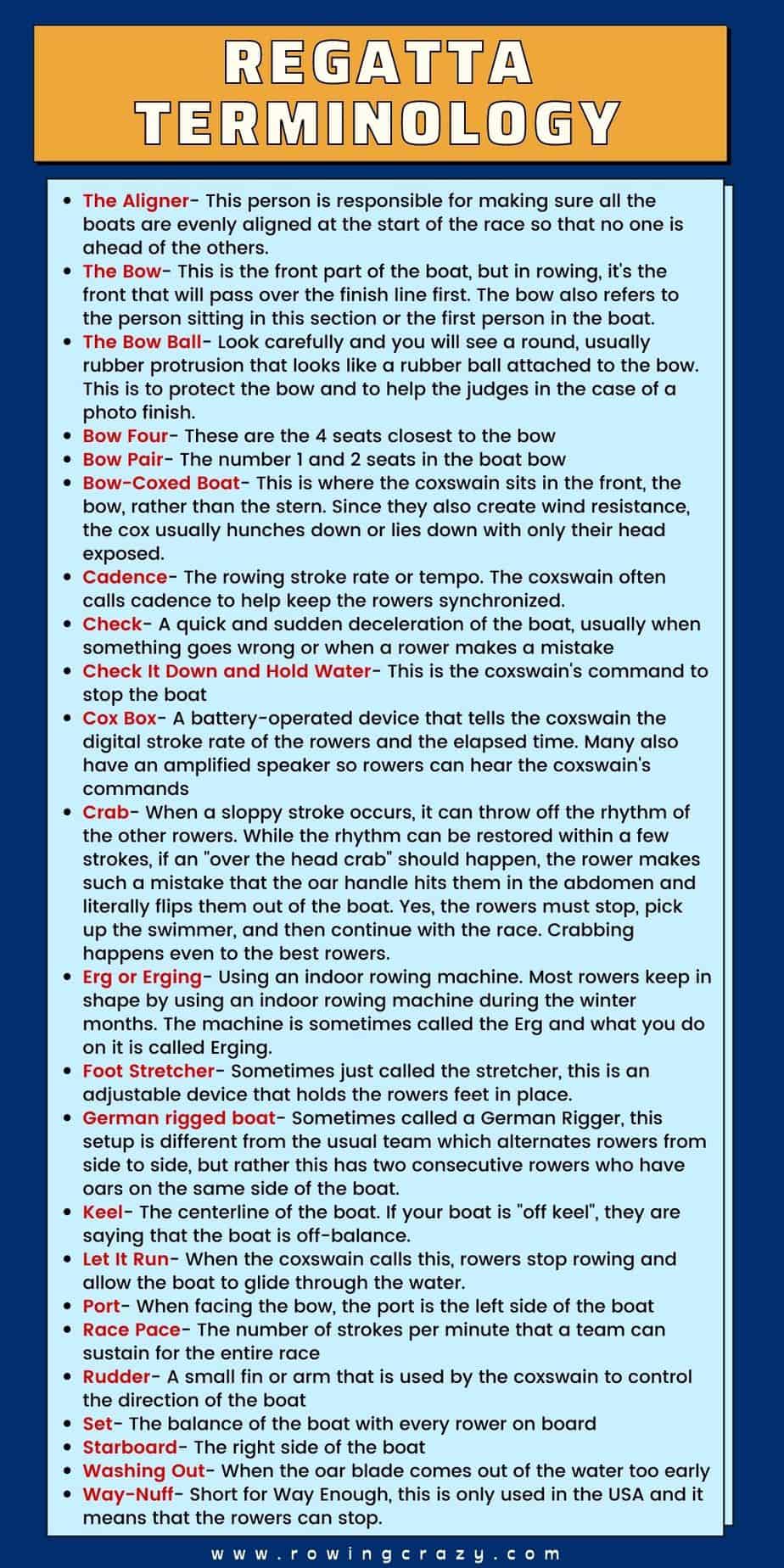
- The Aligner- This person is responsible for making sure all the boats are evenly aligned at the start of the race so that no one is ahead of the others.
- The Bow- This is the front part of the boat, but in rowing, it’s the front that will pass over the finish line first. The bow also refers to the person sitting in this section or the first person in the boat.
- The Bow Ball- Look carefully and you will see a round, usually rubber protrusion that looks like a rubber ball attached to the bow. This is to protect the bow and to help the judges in the case of a photo finish.
- Bow Four- These are the 4 seats closest to the bow
- Bow Pair- The number 1 and 2 seats in the boat bow
- Bow-Coxed Boat- This is where the coxswain sits in the front, the bow, rather than the stern. Since they also create wind resistance, the cox usually hunches down or lies down with only their head exposed.
- Cadence- The rowing stroke rate or tempo. The coxswain often calls cadence to help keep the rowers synchronized.
- Check- A quick and sudden deceleration of the boat, usually when something goes wrong or when a rower makes a mistake
- Check It Down and Hold Water- This is the coxswain’s command to stop the boat
- Cox Box- A battery-operated device that tells the coxswain the digital stroke rate of the rowers and the elapsed time. Many also have an amplified speaker so rowers can hear the coxswain’s commands
- Crab- When a sloppy stroke occurs, it can throw off the rhythm of the other rowers. While the rhythm can be restored within a few strokes, if an “over the head crab” should happen, the rower makes such a mistake that the oar handle hits them in the abdomen and literally flips them out of the boat. Yes, the rowers must stop, pick up the swimmer, and then continue with the race. Crabbing happens even to the best rowers.
- Erg or Erging- Using an indoor rowing machine. Most rowers keep in shape by using an indoor rowing machine during the winter months. The machine is sometimes called the Erg and what you do on it is called Erging.
- Foot Stretcher- Sometimes just called the stretcher, this is an adjustable device that holds the rowers feet in place.
- German rigged boat- Sometimes called a German Rigger, this setup is different from the usual team which alternates rowers from side to side, but rather this has two consecutive rowers who have oars on the same side of the boat.
- Keel- The centerline of the boat. If your boat is “off keel”, they are saying that the boat is off-balance.
- Let It Run- When the coxswain calls this, rowers stop rowing and allow the boat to glide through the water.
- Port- When facing the bow, the port is the left side of the boat
- Race Pace- The number of strokes per minute that a team can sustain for the entire race
- Rudder- A small fin or arm that is used by the coxswain to control the direction of the boat
- Set- The balance of the boat with every rower on board
- Starboard- The right side of the boat
- Washing Out- When the oar blade comes out of the water too early
- Way-Nuff- Short for Way Enough, this is only used in the USA and it means that the rowers can stop.
There are more terms that you may hear, but these are some of the most common, along with words you have already learned from this article, like shell, scull, and sweep boats.
Are There Other Terms for Rowing Besides Crew?
Yes, you might hear other words being used depending on the situation.
Common words for rowing include:
- Trawling
- Canoeing
- Sculling
- Boating
- Cruising
- Paddling
- Drifting
I’ve even heard a few people refer to rowing as yachting or sailing, which are very different things but to each their own!
What Are Crew Races Called?
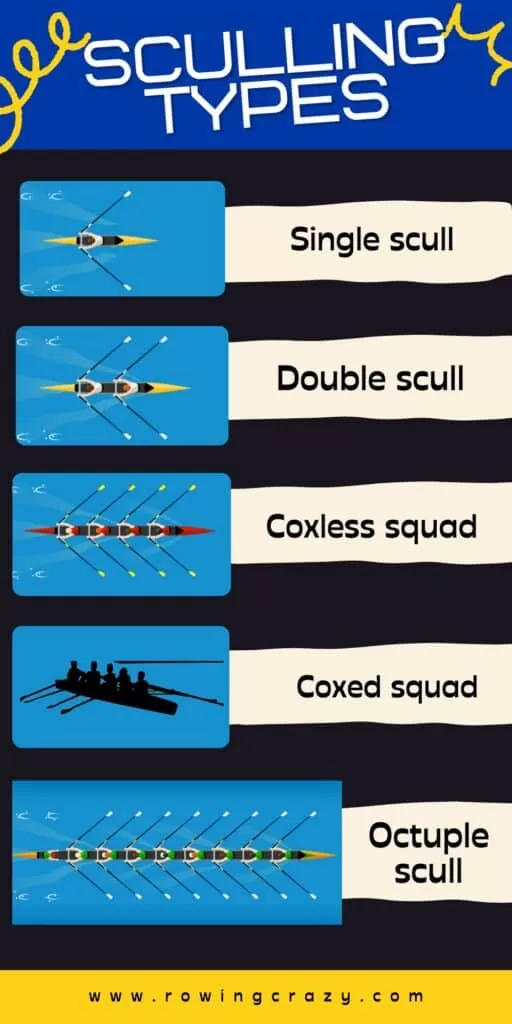
There are different names for the different races depending on several factors. For example, you might hear races called like this:
- Single Scull– One person in the boat holding two oars, one oar in each hand
- Double Scull– Two people in the boat, each holding an oar in one hand
- Coxless Pair (or Straight Pair) – Two people in the boat, each holding one oar
- Coxed Pair– Three people in the boat, two holding one oar each and the coxswain
- Coxed Four (or Coxed Quad)- 5 people in the boat. Four of them are holding one oar each, the 5th person is the coxswain.
You can hear different combinations that are similar to the ones above, such as a Coxless Four or Quad or some other combination. You will become familiar with these terms as you go along.
Remember, practice makes perfect, so the more regattas you attend, the more accustomed you will be to the rowing language. Side Note: You might also like to read my other article where I talk about rowing a pair in more detail.
The Bottom Line
The list of rowing terminology is quite long, but I’ve put the most common terms in this article. If you can learn these words, you’ll enjoy your time at the regattas much more.
Rowing is the first intercollegiate sports contest held in the USA. Although women were not allowed to row until 1976, it is still just as popular today as it ever has been.
I hope you found this article helpful. Feel free to pass it on. Rowing isn’t everything, but life sure seems a lot easier when you’ve got rowing on your mind.
Keep rowing on, my friends!
Written by Petra Amara – RowingCrazy.com
CEO & Founder of RowingCrazy, National Rower, Coxswain Womens Eight Team, Rowing Coach & Writer
Petra is a Mother of two and owner of Rowingcrazy.com. Petra lives and breathes rowing, she also has a passion for writing which lead her to start RowingCrazy.com to share her rowing experience and expertise with others.



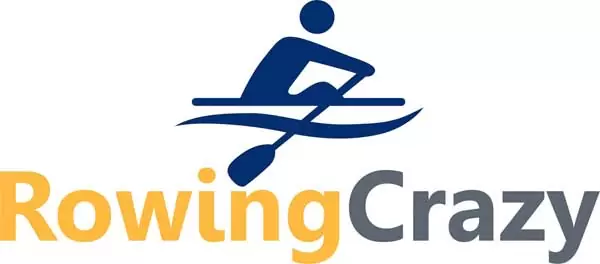


Pingback: What Does a Coxswain Do & Say? | Rowing Crazy
Pingback: Famous Rowers: Olympians, Celebrities & Much More!